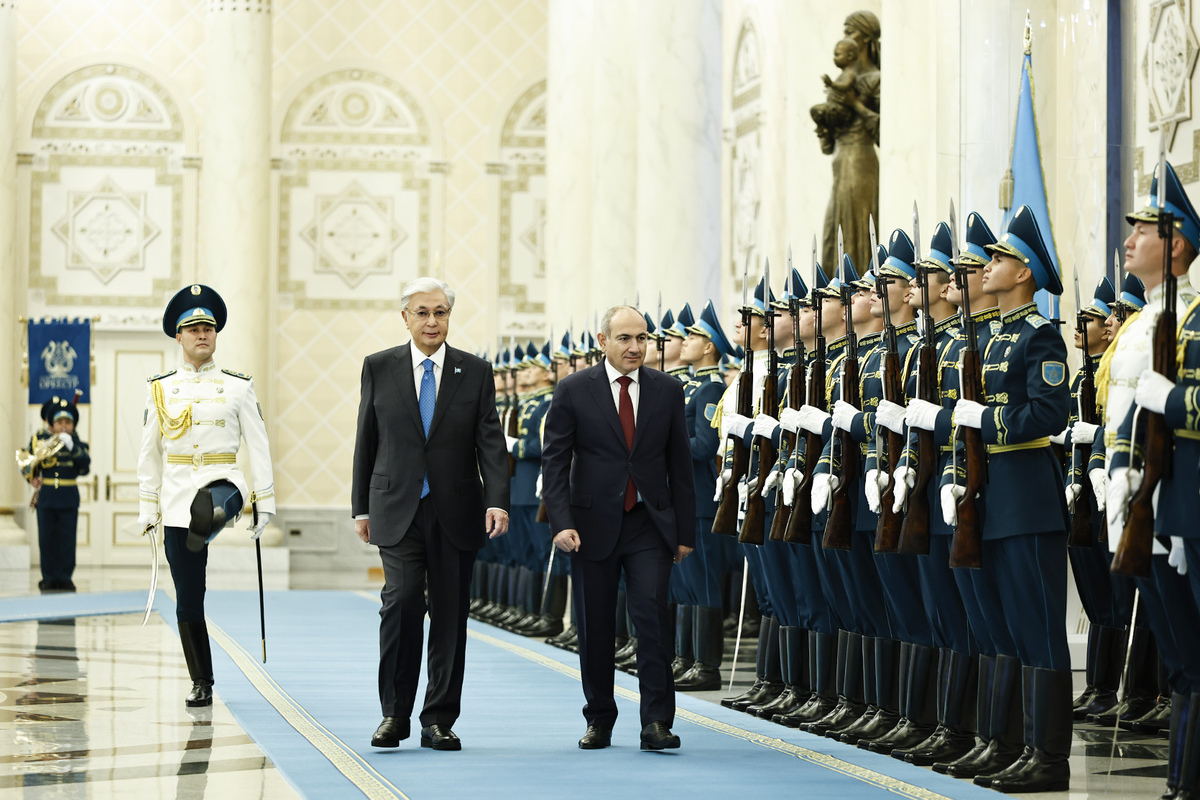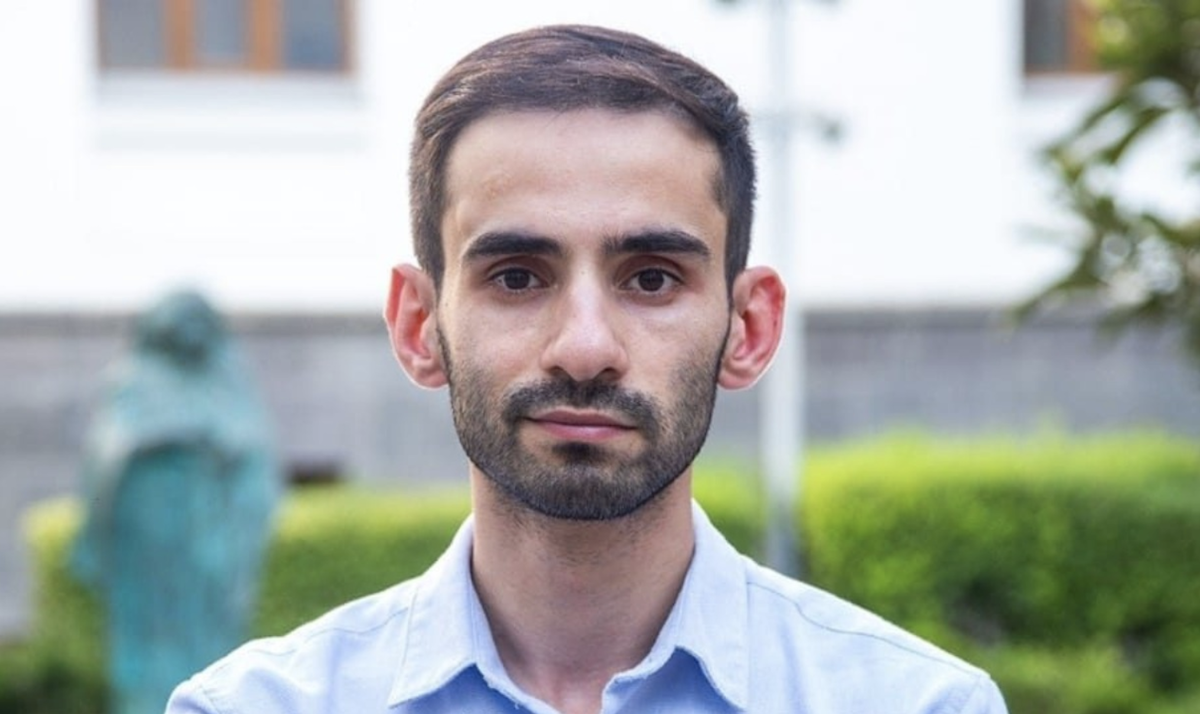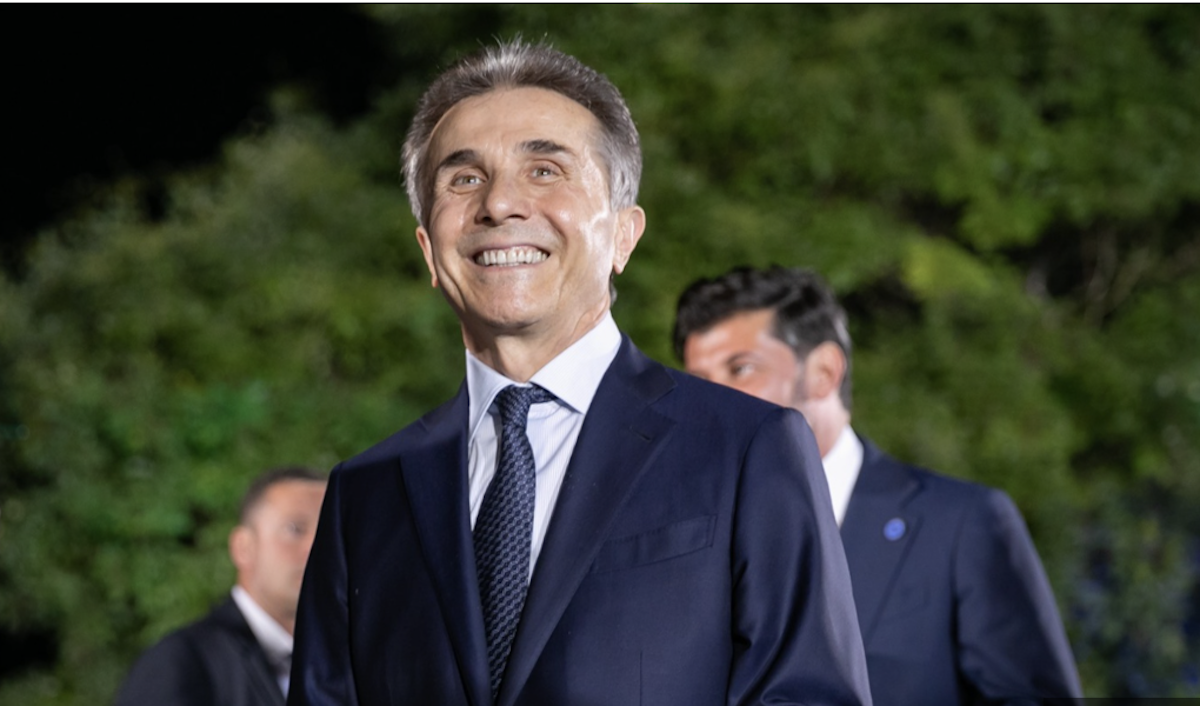Fenced In: Stabilising the Georgia-South Ossetia separation line. Photo essay by Crisis Group
Georgians in the zone of the Georgian-Ossetian conflict. Original publication on the Crisis Group website
Russia’s war on Ukraine has all but stopped Moscow’s efforts to fence off the line that separates breakaway South Ossetia from Georgia proper. Conflict parties should use this lull to ease the suffering this decade-long process has inflicted on people living on both sides.
In early August 2008, six years before it annexed Crimea and fourteen years before its full-fledged invasion of Ukraine, Russia sent troops marching into Georgia. That war was short – five days of fighting – but it was consequential. Days after it ended, Russia recognised the self-declared independence of two longstanding breakaway Georgian regions, Abkhazia and South Ossetia. Both had in effect been self-governing since wars in the 1990s, but the 2008 war left their Russian-backed de facto governments in control of more territory.
Except for a small strip of land connecting it to Russia, South Ossetia is encircled by Georgian government-controlled territory. For over a decade, Russian military forces have been building and reinforcing fences along the line of separation between South Ossetia and Georgia proper, a process foreign observers have dubbed “borderisation”. The word reflects Moscow’s aim: to transform the line between the region and the rest of the country into a true “border” separating two states. As the line divides communities and families, however, the fence along it produces an array of difficulties for people living on both sides. It also upsets political relations, as Russia’s efforts to change realities on the ground feed into its tensions with the Georgian government and its partners in the West.
This photo essay portrays borderisation’s repercussions for the people living near the line of separation. It also describes how the war in Ukraine has shaped Russia’s efforts in South Ossetia.
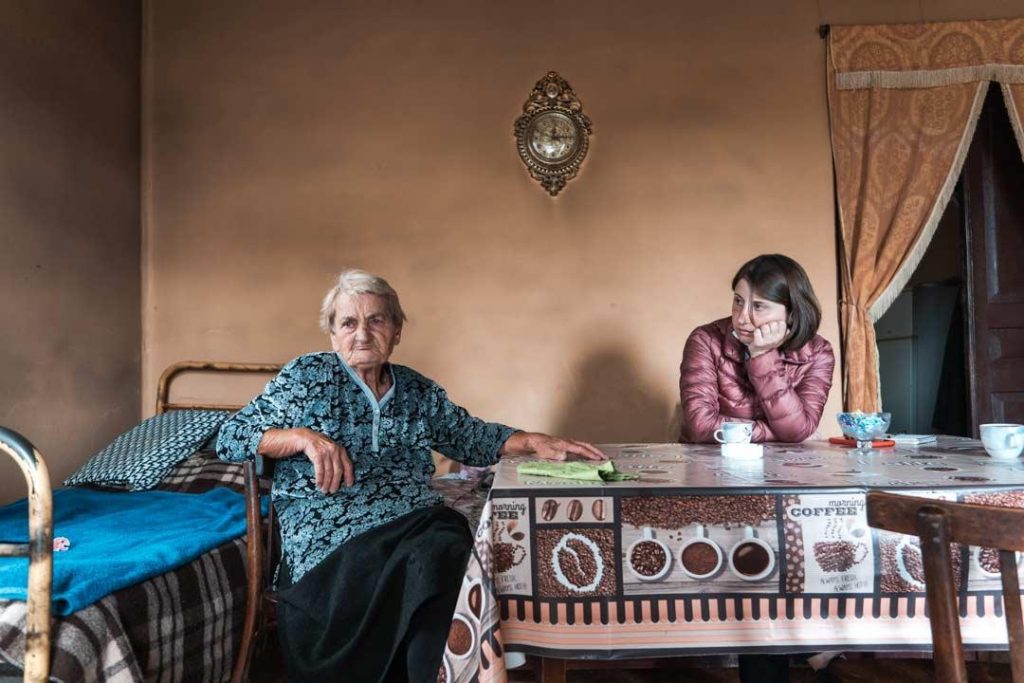
Four years ago, in the Georgian village of Khurvaleti, 80-year-old Nora was making breakfast as her son shaved at the kitchen sink, when they heard loud noises in the garden. A look outside showed several Russian soldiers digging post holes for what would soon become rows of barbed-wire fences attached to the back of the house.

A watchtower was next to appear, with Russian border guards patrolling the area on a daily basis. Today, anyone who crosses the line of fences risks detention and a fine or a prison term.
Nora’s new life is not an isolated example. In the last decade, Russian military personnel have fenced over 80km of the line of separation between South Ossetia and Georgia proper. With around 60,000 people living along the line, almost evenly split between both sides, every shift, even a small one, causes further displacement and increases the risks of tensions escalating.

Khurvaleti, a small settlement which is home to both ethnic Georgians and Ossetians, is a microcosm of borderisation. The village is almost entirely surrounded by fences, video cameras and sound detectors that monitor movement across the line.

Several of the border guards’ green booths are visible from the windows of Khurvaleti’s only school. Russian military vehicles drive across the nearby hills. Sometimes, their military helicopter flies over the school garden.
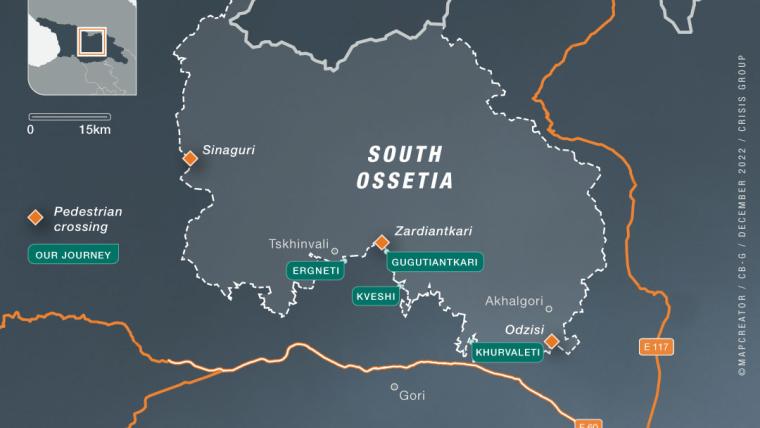
While Russia has not stopped borderisation since its all-out invasion of Ukraine in February, its approach does seem to have changed. It has paused work in more densely populated areas, and appears to be focusing on fencing projects that do not require the resettlement of residents living near the line, which would lead to tensions with the Georgian authorities.
- Investigation of crimes committed during August 2008 war completed: What does it mean?
- Living in the conflict zone: War is bitter. I survived it both as a child and when I got old. Video
- Land of abandoned villages. Stories from the deserted Truso Gorge, where Ossetians and Georgians once lived together
Moscow’s less confrontational approach to borderisation is not haphazard. According to state-affiliated Russian analysts, the Kremlin’s policy is to avoid situations that would divert diplomatic or military resources from its efforts in Ukraine. Seemingly corroborating this judgement, Russia has redeployed much of its heavy equipment and military personnel, including those troops recruited from among the region’s residents, from South Ossetia to Ukraine. According to a local Russian-language media outlet, at least twenty young South Ossetian men have died in Ukraine, their families receiving their remains to organise funerals back home.
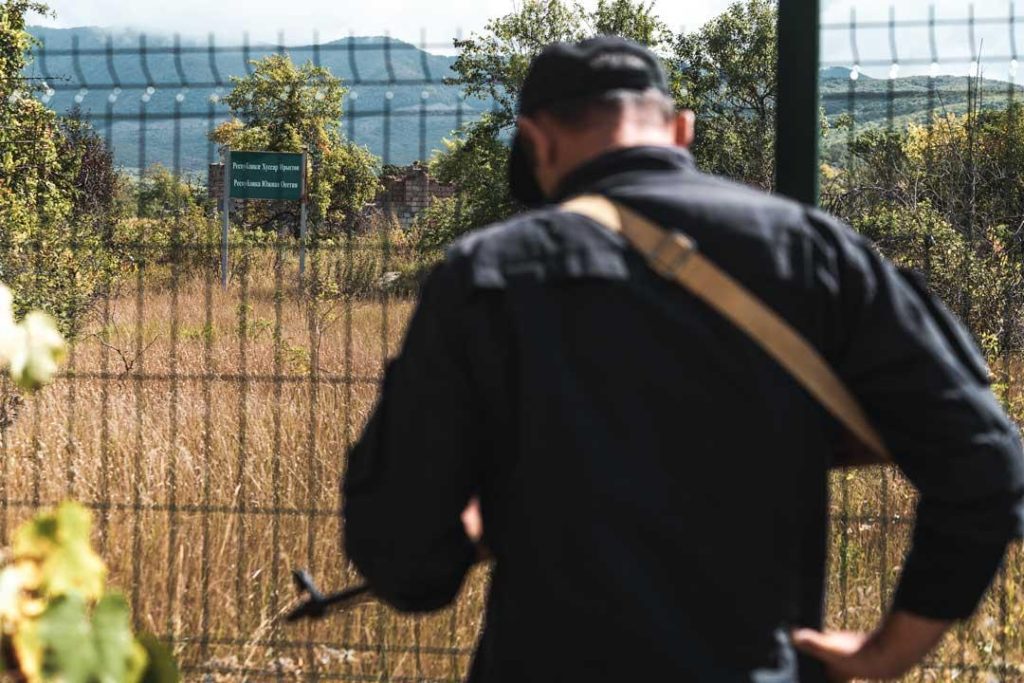
Russia’s redeployments do not seem to include border guards, who continue their regular patrols along the South Ossetian side of the line of separation. The number of people they detain has decreased in recent months, however, and those who do go to prison for crossing the line are released faster, and with fewer complications, than in previous years.

When Russia launched its full-scale invasion of Ukraine, Georgian and de facto officials alike were concerned about how it would affect their own conflict dynamics. Tbilisi feared possible provocations by Russia or even a new war. Leaders in the breakaway regions, where people depend heavily on Russian military, political and economic support, worried that Georgia might take advantage of Moscow’s focus on Ukraine to attack them.
- Why does Moscow play down S.Ossetia’s attempts to join Russia?
- S. Ossetian train station where only buses run. Video
- Op-ed: what threatens the environment in South Ossetia
In the spring, however, Tbilisi reiterated its commitment to peacefully resolving its conflict with the breakaways. This statement came amid heavy criticism, both inside the country and internationally (among Western powers especially), of Georgia’s efforts to stay out of the growing confrontation between Russia and the West. While it supported Ukraine in multilateral forums, Tbilisi nonetheless refused to apply sanctions on Russia, with whom it maintained bilateral trade.
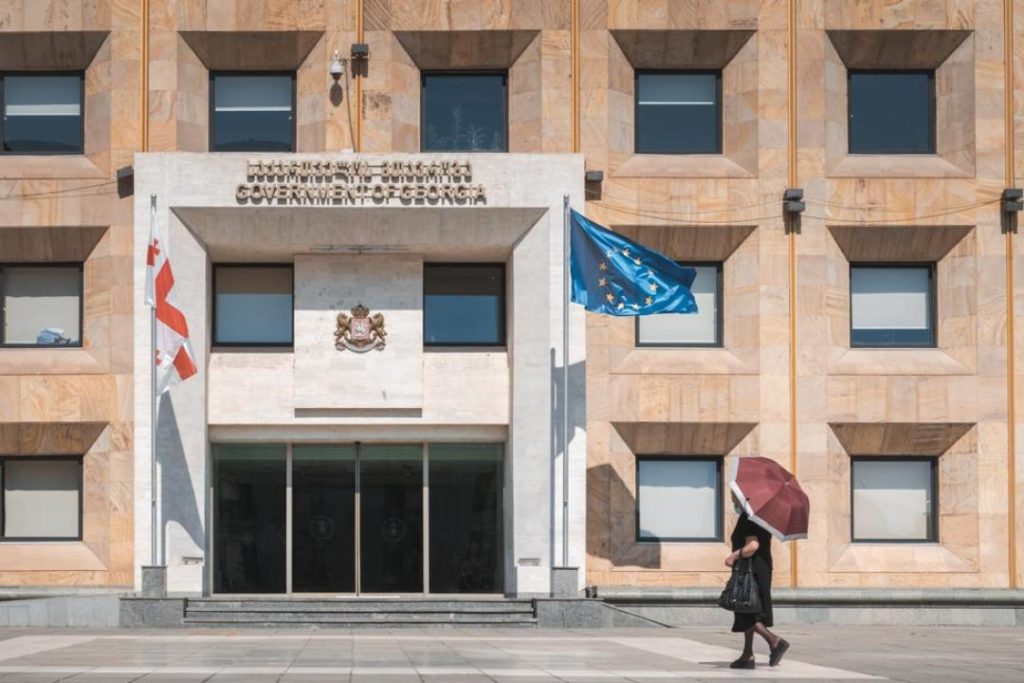
Tbilisi’s cautious stance and Moscow’s focus on Ukraine have both contributed to the relative calm along the Georgia-South Ossetia line of separation. One Georgian official described it as a “honeymoon” period in Georgia’s interactions with Russian and de facto South Ossetian security officials, the first such lull since the 2008 war.

This recent stability contrasts starkly with the tumult that residents experienced in prior years. In 2019, for example, villagers in Gugutiantkari, on the Georgian side, had to vacate their houses when Russia launched a new phase of borderisation in the area. Some of them had to leave even earlier, in 2008, when their houses were burnt down in the war. Today, their homes lie in ashes beside Russian fences.
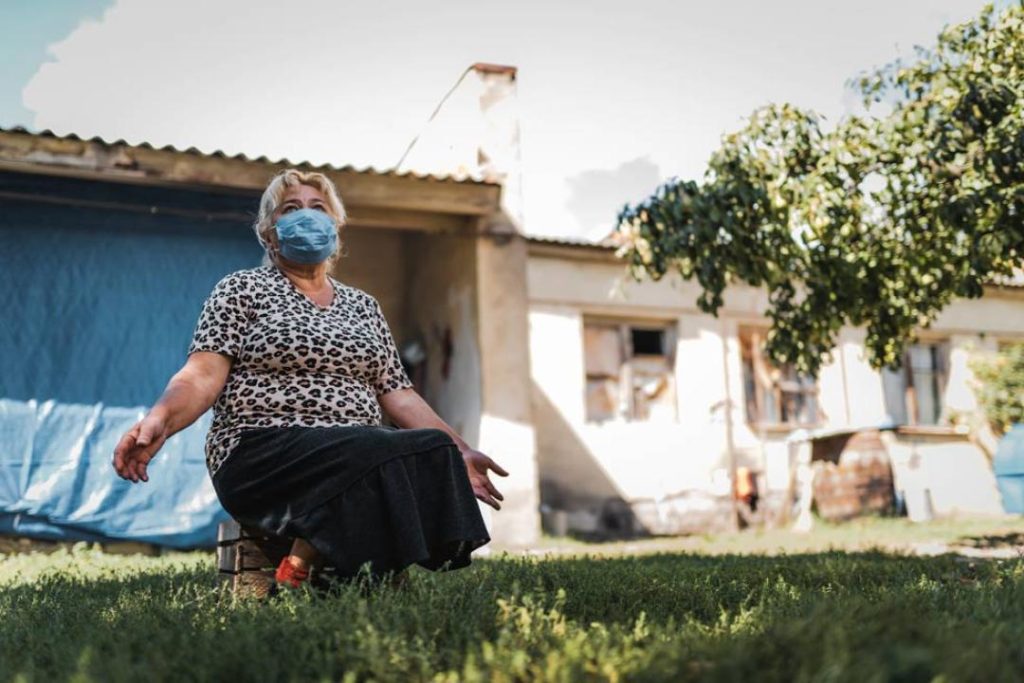
One such resident is Ketevan, 66, whose house was destroyed during fighting in 2008. Since then, her family has lived in Gugutiantkari’s old pre-school building, in a small, dark room with a leaking roof. Ketevan occasionally visits the remains of her old house, a two-story building with a big cross on the wall located less than a metre away from the Russian fences. “Sometimes, when I enter the courtyard, I close my eyes and I can hear childrens’ voices”, Ketevan told Crisis Group in an interview. “I pray to God that one day, I’ll open my eyes and see kids playing at the house”.
Georgian authorities are discussing possible rehabilitation projects for areas such as Gugutiantkari. Before they move forward, however, they will need assurances that Russia’s newfound restraint will endure.
Continued talks between the parties offer an opportunity to build Tbilisi’s confidence. While the Ukraine war derailed certain regional forums, particularly those that include Western and Russian representatives, parties to the South Ossetia conflict have maintained contact and coordination throughout.
Notably, Russia, Georgia and the breakaway’s de facto authorities have continued to meet regularly as part of the Incident Prevention and Response Mechanism, a framework created after the 2008 war, under the joint auspices of the European Union Monitoring Mission in Georgia and the Organization for Security and Co-operation in Europe (OSCE).
The parties also interacted through the Geneva International Discussions, the South Ossetia conflict’s most important official negotiation format. Meetings were paused for almost six months following Russia’s assault on Ukraine, but the format’s co-chairs – the European Union, UN and OSCE – continued travelling to the South Caucasus and stayed in contact with Russian officials. The first round of talks to bring together all participants – including Russian and U.S. representatives – since the war started was held in early October.
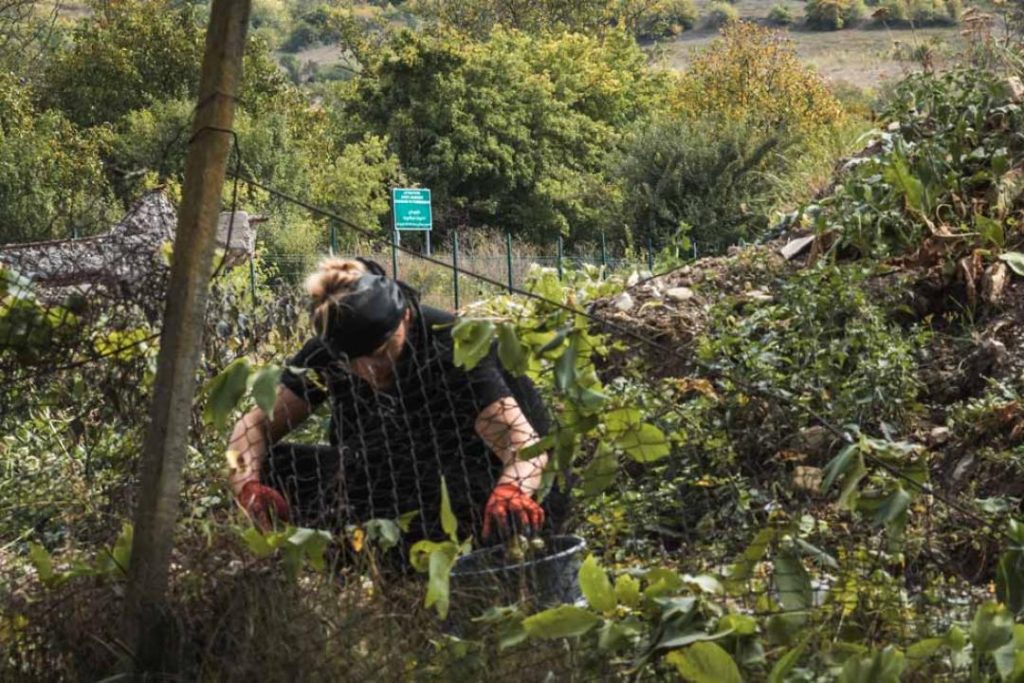
Russia and South Ossetia could also give assurances that Georgian farmers living and working near the fences will be able to tend their crops safely and without undue encumbrances. A decade of borderisation has left hundreds of Georgians with no access to their farmlands or income from the produce. According to Georgian census data, almost a quarter of the population of villages along the line has moved deeper into Georgia or left the country altogether in the last decade.
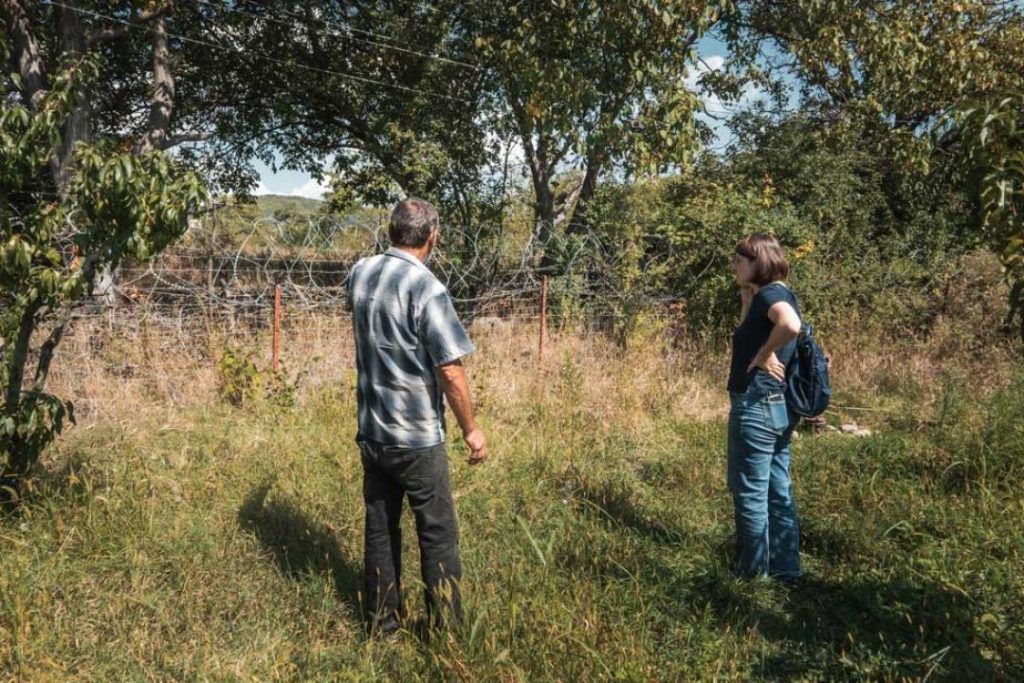
Kveshi, a village on the Georgian side of the line, used to be known for its dense fruit orchards – but not anymore. Several years ago, when the borderisation process reached the village, Givi, who owns a house there, found his apple orchard cut in half by two dense rows of barbed wire. Russian soldiers with dogs now regularly patrol between the fences, under surveillance cameras’ watchful gaze.
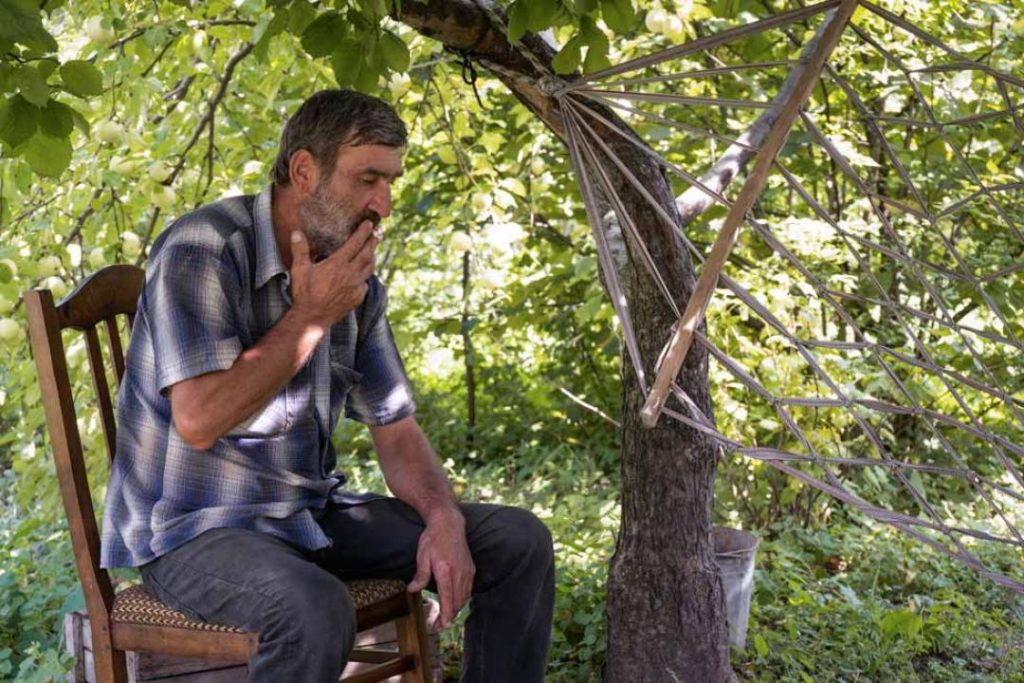
The barbed wire makes it hard for Givi to access his orchard’s only spring, which is located right next to it. If the border guards see him approaching the water source, he could face accusations of attempting to cross the “border” and subsequent punishment.
Despite these difficulties, Givi still tries to make a living through farming. Some of his neighbours, however, have already given up and moved away from the village. Their empty gardens remain, a testament to the repercussions of borderisation.

Many are leaving areas on the South Ossetian side of the fence, too. In some villages, streets remain dark at night, with no residents left to walk them. Those who remain complain about the problems they face due to restrictions around the line of separation.

Before the de facto South Ossetian authorities reopened them in August, crossings between South Ossetia and Georgia proper had stayed closed for the greater part of three years. The reopening was the result of sustained dialogue between the conflict parties despite the Ukraine war and a strong push from international mediators.
Three years of closures, however, have led most Georgian residents still living on the South Ossetian side to vacate the settlements that remained there. Many had to resettle across the line of separation as closed crossings prevented them from collecting salaries and pensions provided by the Georgian government.
Those who remained, mainly elderly residents who did not want to leave their homes, were left with limited access to funds and medical assistance, which the Georgian side also normally administered.
According to the Georgian authorities and local activists, over a dozen elders have died in the last three years due to the lack of adequate first aid.
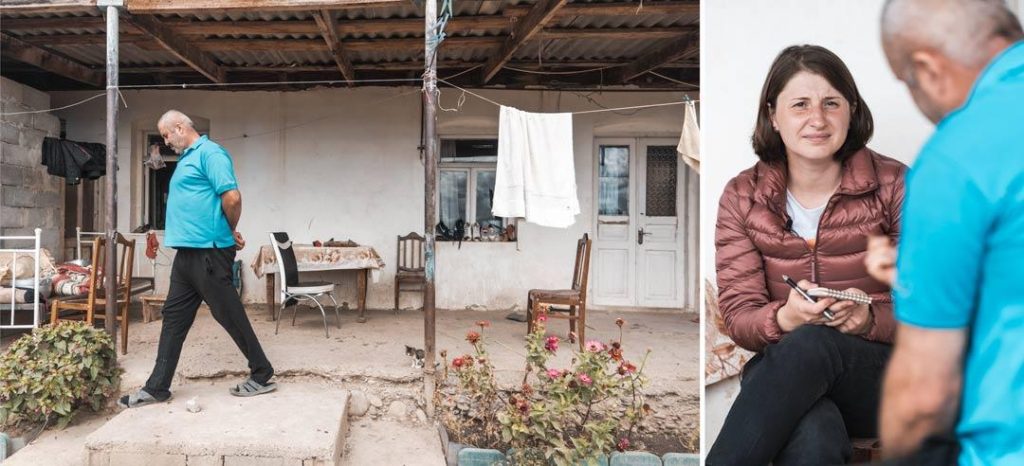
With crossing points reopened, people have started travelling across the line of separation again. But difficulties remain. Currently, the crossings are open for ten days at the end of each month, and those who plan to cross need a special pass issued by the de facto authorities. Following the conflict parties’ most recent meeting in November, international mediators have called on South Ossetian representatives “to apply leniency” regarding passes and to lift limitations on crossing points’ operation times.
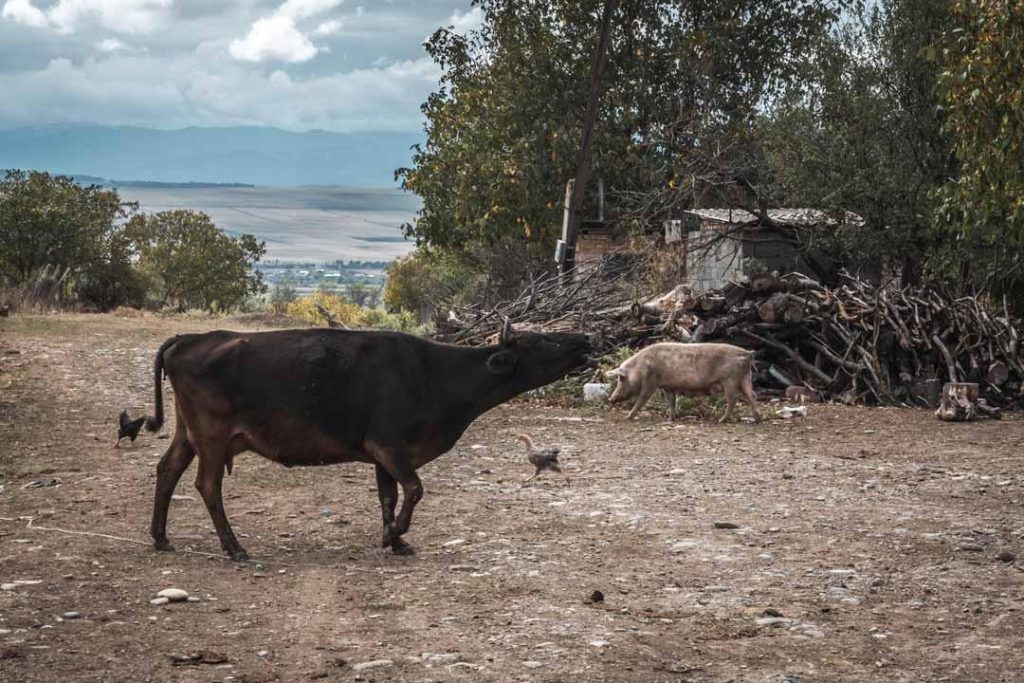
Easing the rules for crossing could help restore what used to be frequent contact between people living on opposite sides of the line. For instance, Malkhaz lives in Georgia proper but many of his relatives and friends live in South Ossetia. He hasn’t seen them for years, though some live only metres away, across the barbed fence.
They still speak regularly, mainly on the telephone and via social media. Malkhaz says their ties remain strong and that they help each other when in need. In 2021, when Malkhaz thought he had lost a small pig, a friend called from a nearby South Ossetian settlement to inform him that it was in his garden. Unable to approach the fence for fear of detention, they could not arrange for the pig’s return for three months.
In the end, Malkhaz says, he was able to cross into South Ossetia and bring it home. “I carried it over along with its litter. It’s here now”, he smiles.
It is not yet clear if this period of relative calm will produce durable change on the ground or improve relations between South Ossetia and Georgia proper. For now, the best hope for progress lies in maintaining diplomatic engagement between the conflict parties and foreign mediators.
Even if the political cleavages remain unaddressed, such continued negotiations will increase the chances of sustaining stability on the ground, giving hope to people who want to keep their homes near the line and creating opportunities to improve their lives there.
Among other things, talks should focus on easing travel restrictions and ensuring that crossing points stay open to enable more regular cross-line contact. Over time, steps such as these can contribute to the resumption of trade and other economic links, giving greater access to livelihoods and enhancing the quality of life for those who continue to make their lives in the shadow of this long-lasting conflict.













